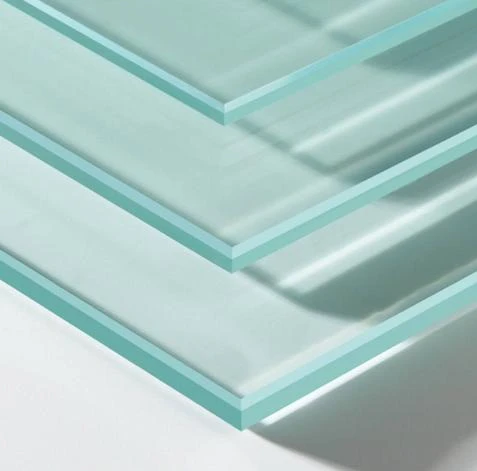The Manufacturing Process of Sheet Glass
Sheet glass is a versatile material used in various applications, including windows, glass doors, and display cases. The production of sheet glass involves a series of carefully controlled processes that transform raw materials into flat, transparent sheets. Understanding the manufacturing process of sheet glass can provide valuable insights into its properties and applications.
Raw Materials
The primary raw materials used in the production of sheet glass include silica sand, soda ash, and limestone. Silica sand acts as the main component, providing the glass its basic structure. Soda ash serves as a flux, lowering the melting temperature of the silica and facilitating its transformation into glass. Limestone is added to improve the chemical durability of the final product. Other materials, such as coloring agents and fining agents, may also be included to modify the glass’s properties.
Melting Process
The first step in the manufacturing of sheet glass is the melting of raw materials in a furnace. The raw materials are mixed in precise proportions and heated to temperatures exceeding 1,700 degrees Celsius (3,092 degrees Fahrenheit) in a furnace. This high temperature allows the silica to dissolve into a viscous molten glass. The melting process typically lasts several hours and requires careful management to ensure that all materials are completely fused and impurities are eliminated.
Forming Techniques
Once the molten glass is prepared, it can be formed into sheets using various techniques. The most common method is the float glass process, which was developed in the mid-20th century. In this process, the molten glass is poured onto a bath of molten tin, creating a smooth, flat surface. The disparity in density between the glass and tin allows the glass to float, forming a perfectly flat sheet as it cools.
Another technique is the sheet glass process, which involves drawing molten glass through rollers to create sheets of desired thickness. While this method is less common today, it was once widely used before the float glass process became dominant.
sheet glass manufacturing process
Annealing
After forming, the glass sheets undergo an annealing process, where they are gradually cooled in a controlled environment. This step is crucial because it relieves internal stresses that may have developed during the forming process. The glass is transferred to an annealing lehr, a long, temperature-controlled chamber where the temperature is slowly lowered. Proper annealing is essential to ensure the durability and strength of the final product.
Cutting and Finishing
Once the glass sheets have been adequately cooled, they are cut to size. Automated cutting machines are used to score the glass, allowing for precise and uniform pieces. The edges of the cut glass are then polished or beveled to remove sharp edges, ensuring safety during handling and installation.
Additional finishing treatments may be applied to enhance the glass's properties. For example, glass can be tempered, which involves reheating it to high temperatures and then rapidly cooling it to increase its strength. Laminating is another common procedure where a layer of plastic is sandwiched between two layers of glass, enhancing impact resistance and safety.
Quality Control
Throughout the manufacturing process, quality control is vital to ensure that the sheet glass meets industry standards. Various tests are conducted to assess optical clarity, surface quality, and dimensional accuracy. Any imperfections, such as bubbles or inclusions, are detected and addressed before the glass is shipped to customers.
Conclusion
The manufacturing process of sheet glass is a complex and intricate series of steps that require precision and expertise. From the careful selection of raw materials to the various forming and finishing techniques, each phase plays a critical role in determining the final product's quality and performance. As technology continues to advance, the methods and techniques used in the production of sheet glass will likely evolve, enabling manufacturers to meet the growing demand for high-quality glass products. This process not only highlights the importance of engineering and material science but also underscores the integral role sheet glass plays in our daily lives.
 Afrikaans
Afrikaans  Albanian
Albanian  Amharic
Amharic  Arabic
Arabic  Armenian
Armenian  Azerbaijani
Azerbaijani  Basque
Basque  Belarusian
Belarusian  Bengali
Bengali  Bosnian
Bosnian  Bulgarian
Bulgarian  Catalan
Catalan  Cebuano
Cebuano  Corsican
Corsican  Croatian
Croatian  Czech
Czech  Danish
Danish  Dutch
Dutch  English
English  Esperanto
Esperanto  Estonian
Estonian  Finnish
Finnish  French
French  Frisian
Frisian  Galician
Galician  Georgian
Georgian  German
German  Greek
Greek  Gujarati
Gujarati  Haitian Creole
Haitian Creole  hausa
hausa  hawaiian
hawaiian  Hebrew
Hebrew  Hindi
Hindi  Miao
Miao  Hungarian
Hungarian  Icelandic
Icelandic  igbo
igbo  Indonesian
Indonesian  irish
irish  Italian
Italian  Japanese
Japanese  Javanese
Javanese  Kannada
Kannada  kazakh
kazakh  Khmer
Khmer  Rwandese
Rwandese  Korean
Korean  Kurdish
Kurdish  Kyrgyz
Kyrgyz  Lao
Lao  Latin
Latin  Latvian
Latvian  Lithuanian
Lithuanian  Luxembourgish
Luxembourgish  Macedonian
Macedonian  Malgashi
Malgashi  Malay
Malay  Malayalam
Malayalam  Maltese
Maltese  Maori
Maori  Marathi
Marathi  Mongolian
Mongolian  Myanmar
Myanmar  Nepali
Nepali  Norwegian
Norwegian  Norwegian
Norwegian  Occitan
Occitan  Pashto
Pashto  Persian
Persian  Polish
Polish  Portuguese
Portuguese  Punjabi
Punjabi  Romanian
Romanian  Russian
Russian  Samoan
Samoan  Scottish Gaelic
Scottish Gaelic  Serbian
Serbian  Sesotho
Sesotho  Shona
Shona  Sindhi
Sindhi  Sinhala
Sinhala  Slovak
Slovak  Slovenian
Slovenian  Somali
Somali  Spanish
Spanish  Sundanese
Sundanese  Swahili
Swahili  Swedish
Swedish  Tagalog
Tagalog  Tajik
Tajik  Tamil
Tamil  Tatar
Tatar  Telugu
Telugu  Thai
Thai  Turkish
Turkish  Turkmen
Turkmen  Ukrainian
Ukrainian  Urdu
Urdu  Uighur
Uighur  Uzbek
Uzbek  Vietnamese
Vietnamese  Welsh
Welsh  Bantu
Bantu  Yiddish
Yiddish  Yoruba
Yoruba  Zulu
Zulu 

